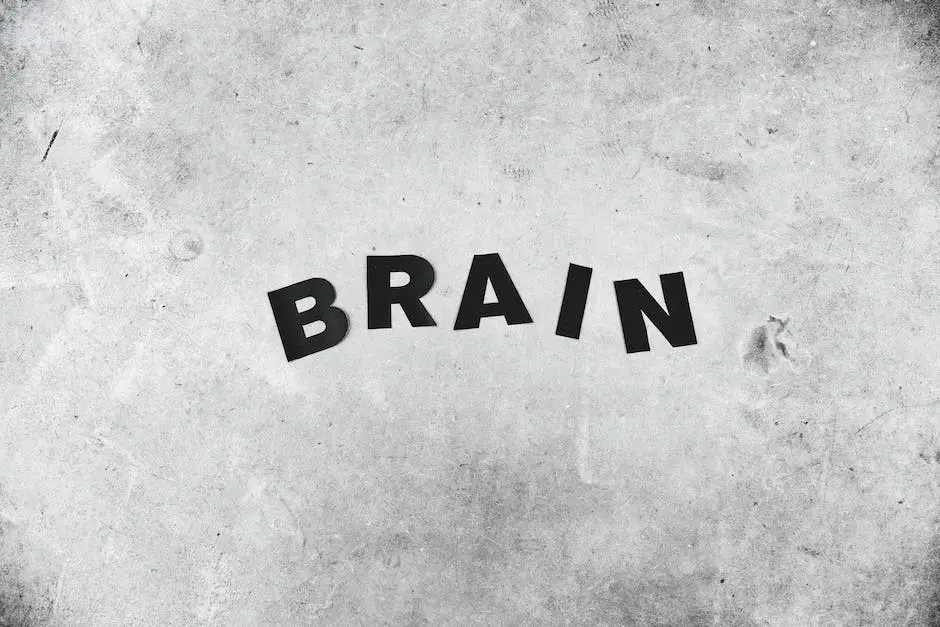Mastering Negation: A Comprehensive Guide
In the labyrinth of linguistic and logical structures, negation emerges as a complex yet a fundamental concept, quietly orchestrating the realms of mathematics, grammar, semantics, logic, and philosophy. Negation, being intrinsic to human cognitive processes, dynamically shapes our understanding of the world around us, enabling us to express disagreement, contrast, and most importantly, emptying sentences of their truth. Our comprehensive exploration begins with grounded insights into general principles of negation, skilfully spans through its mathematical equations and grammatical nuances, and ultimately ventures deep into the intellectual territories of logic and philosophy. Each section seeks to unmask negative expressions, articulate their various forms and effects, and illuminate the intriguing role these constructs play across disciplines.
Understanding the Basics of Negation
Understanding Negation
Negation is an integral part of language, logic, and mathematical systems. Essentially, negation is the act of denying, contradicting, or proving something false. It is the process of turning a statement, proposition, or idea from positive (assertive) to negative (denial). Negation plays a fundamental role in the way we form concepts, construct arguments, and communicate ideas.
In the realms of logic and philosophy, negation is often used to invalidate a certain proposition or argument by asserting the opposite of what has been stated. For example, if the argument is ‘All men are mortal’, the negation of this argument would be ‘Not all men are mortal’. This form of negation, termed logical negation, is critical in analytical debate and reasoning, allowing us to verify or falsify arguments.
Grammatical Negation
In linguistic terms, negation is the part of grammar that deals with negative sentences or expressions. Grammatical negation involves the use of negative particles or words such as ‘not’, ‘no’, ‘never’, ‘none’, and ‘nothing’ to oppose the truth value of a sentence. For instance, the negation of ‘She is coming’ would be ‘She is not coming’. Such negation not only plays a pivotal role in the formation of sentences but also has deep functional significance in communication, allowing us to express rejection, denial, disagreement, or prohibition.
Mathematical Negation
In a mathematical context, negation is involved in various operations that invert the conditions of propositions. In mathematics and binary logic, for example, negation is used to reverse the truth value of an assertion. So, if ‘P’ represents a certain statement, then ‘¬P’ (read as ‘not P’) would represent the negation of that statement. For instance, if ‘P’ stands for ‘It is raining’, then ‘¬P’ would imply ‘It is not raining’. Negation in maths forms the basis of the crucial principle of contradiction.
The Importance of Negation
Negation plays an essential role in forming the structure of human thought, communication, and computation methodologies. By allowing us to express our disagreements, reject assumptions, or convey the absence of something, negation enriches our ability to communicate complex ideas and engage in logical reasoning. Furthermore, in the world of computation and information technology, negation as a logical operation finds extensive application in coding, programming, and data processing.
Types of Negation
Different languages and logical systems may use different types of negation, and the negation process varies accordingly. Affixal negation involves adding a negative affix to a word (like ‘un-‘ in ‘unable’), while non-affixal negation employs separate negation words (like ‘not’). In propositional logic, we have classical negation (¬P), strong negation (which denies the possibility of P), and weak negation (which merely denies the truth of P).
The Significance of Negation
An in-depth knowledge of negation principles and their application across various domains can enhance the sophistication of our own cognitive operations and our capacity to articulate intricate and subtle notions.

Negation in Mathematics
Negation in the Realm of Mathematics
In the discipline of mathematics, negation takes centre stage as an essential operation that reverses the truth value of a proposition. In more straightforward terms, it switches a statement from being true to false, or the converse. This operation is denoted in mathematics by the ‘¬’ symbol or in certain instances simply by the term ‘not’. For instance, the negation of the affirmation ‘x is greater than 2’ would take the form ‘x is not greater than 2’.
Universal and Existential Quantifiers in Mathematical Negation
In the context of mathematical logic, universal and existential quantifiers play a critical role in expressing relationships. A universal quantifier, symbolised by (∀), refers to ‘for all’ and an existential quantifier, symbolised by (∃), means ‘there exists’. The negation of a universal statement shifts it to an existential one and vice versa. For instance, the negation of “For all x, x > 1” is “There exists an x such that x is not greater than 1”.
De Morgan’s Law and Negation
De Morgan’s law, named after British mathematician Augustus De Morgan, is a crucial rule in mathematics that can help simplify complex logical expressions. This law is particularly useful when dealing with negations. It offers a set of transformation rules which illustrate how negations function within the context of conjunctions (‘and’) and disjunctions (‘or’). The Law states that the negation of a conjunction is the disjunction of the negations, and the negation of a disjunction is the conjunction of the negations. Symbolically, ¬(A∧B) = ¬A∨¬B and ¬(A∨B) = ¬A∧¬B.
Negation in Arithmetic
In the field of arithmetic, negation is also an essential operation. Here, it is often referred to as ‘negative’. The term ‘negative’ is used to describe a number that is less than zero. Thus, when dealing with negative numbers, one is essentially working with the negation of a positive value. For instance, ‘-3’ is the negation of ‘3’.
Affirming and Negating Mathematical Statements
It’s important to fully understand the dynamics between affirming and negating mathematical statements. Negation, in essence, is the opposite of affirmation. Therefore, when a statement is affirmed (e.g., x > 2), its negation would involve denying that statement (x ≤ 2). Often, when working with negations, it is easier to handle the statement if it is first affirmed.
Examples of Negation in Mathematics
Consider the statement “For all positive integers n, n > 0”. The negation of this would be “There exists a positive integer n such that n ≤ 0”. In this example, we have transitioned from a universal affirmation to an existential negation.
In terms of arithmetic, consider the number 5. The negation, or opposite, of 5 is -5. This clearly illustrates that the concept of negation also applies to arithmetic operations.
Conclusion
Mastering negation is crucial to a more profound and nuanced comprehension of mathematics. Not only does it enable us to oppose statements accurately, but it also fosters our logical reasoning and problem-solving abilities.

Negation in Grammar and Semantics
Exploring Negation in Languages
Moving beyond the realm of mathematics, negation takes on a significant role in linguistics as well, existing in all languages to communicate denial, contradiction, or absence. However, its form and structure may differ from one language to another, with many utilising negation particles, auxiliary verbs, and suffixes to negate sentences.
Negative Words and Negative Prefixes in English
Negative words, which include ‘no’, ‘not’, ‘none’, ‘nowhere’, ‘nothing’, ‘nobody’ and ‘neither’, have the power to negate or reverse the meaning within a sentence. These words are used to create negative statements, questions and commands in the English language.
In addition to this, English also makes use of negative prefixes such as ‘un-‘, ‘in-‘, ‘im-‘, ‘dis-‘, ‘non-‘ and ‘anti-‘ to form negatives. These prefixes can be added to adjectives, verbs and nouns to change their meaning to the negative form. For instance, ‘happy’ becomes ‘unhappy’, ‘patient’ becomes ‘impatient’, and ‘agree’ becomes ‘disagree’.
Morphological and Syntactic Aspects of Negation
Negation involves both morphological and syntactic aspects. Morphologically, negation can be conveyed through alteration of words, as seen in the use of negative prefixes. Syntactically, negation involves sentence structure modifications. For example, in English, the placement of ‘not’ after the auxiliary verb forms a common negation pattern, as in ‘She is not going’.
Double Negative and Its Semantic Interpretation
A double negative refers to the usage of two negative elements in the same sentence. In English grammar, double negatives are usually considered incorrect because they can create confusion and ambiguity. For example, the sentence “I don’t need no help” is considered grammatically incorrect in Standard English, whereas it might be acceptable in some dialects.
However, in certain languages like Spanish, the double negative is not only acceptable but necessary in specific contexts. For instance, ‘No tengo nada’ translates to ‘I don’t have anything’, where both ‘no’ and ‘nada’ contribute to the negative meaning.
Grasping Semantic Understanding of Negation
In terms of semantics, negation requires an understanding of the inversion of meaning brought about by the use of a negation element. This might mean interpreting ‘not happy’ as essentially being the opposite of ‘happy’. However, in sentences with greater complexity, properly understanding the semantic implications of negation may necessitate appreciation of a wider context and cultural nuances.

Negation in Logic and Philosophy
Applying Negation in Logic and Philosophy
Negation functions as a key concept across various sectors of philosophy as well as in logic. It denotes the transformation of a proposition P into another proposition, termed “not P” or ¬P. This is generally understood to indicate that if P is false, then ¬P is true, and vice versa. It’s also important to remember that in logic, every proposition, regardless of its structure, can be negated.
Classical vs Non-classical Negation
Negation has its own nuances in classical and non-classical logic. In classical logic, the negation of a statement has a binary, either-or status, i.e., a statement is either true or false, no middle ground. This form of negation rests on the premise of the Law of Excluded Middle, asserting that for any proposition, either that proposition is true, or its negation is.
However, in non-classical logic, such as intuitionistic logic and fuzzy logic, negation could be viewed differently. For instance, in intuitionistic logic, the negation of a proposition P, denoted ¬P, is not the affirmation of the falsity of P, but rather a claim that P can be proven to lead to contradiction.
Truth Tables and Negation
A handy tool to analyse the possible outcomes from negating propositions is a truth table. In a truth table, negation is typically represented by flipping the truth value of a given proposition. So if a proposition P is true, its negation ¬P would be false, and vice versa.
Negation in Different Types of Logic
Negation plays an essential role in various types of logic. In Propositional Logic, each proposition is considered in isolation and either affirmed or negated. In Predicate Logic, negation is applied to propositions containing variables. In Modal Logic, which involves necessity and possibility, negation creates a variety of logical possibilities. For example, the negation of “Necessarily P” could be interpreted as “Possibly not P”. Lastly, in Temporal Logic, which includes the concepts of past, present, and future, negation can reverse the temporal order of events.
Philosophical Discussions on Negation
Negation is an intrinsic part of many philosophical discussions. Philosophers often debate the nature of negation and its ontological status. Some question whether negation can exist independently or if it is merely a comparative measure of differing states of affairs. Others discuss whether there’s an asymmetry between affirmation and negation, reflecting on whether the cognitive processing of negation is more complicated than affirmation, as it requires us to construct an alternate reality wherein the negated statement is false. This aspect touches cognitive and psycholinguistic branches of philosophy, bringing to light the complex interdisciplinary nature of understanding how negation operates in our thoughts and expression.

The importance of negation in our discourse, calculations, and thought processes is undeniable. Having traversed from the rudimentary principles to the philosophical depths, it becomes evident that the power of negation extends beyond just a binary operation or a grammatical construct. Indeed, it embraces a vast spectrum, ranging from constructing mathematical arguments to sculpting languages and instigating thoughtful debates in the realm of philosophy. By understanding negation, we gain an effective tool for other disciplines, an insight into the peculiarities of human language, and a philosophical apparatus to the encompassing world of thought. This intricate voyage through the world of negation uncovers not merely a concept to be learned, but a masterpiece to be appreciated in the evolution of abstract expression.
Writio: The Ultimate AI Content Writer – Get high-quality articles written by Writio effortlessly, ensuring maximum rankings on Google. Trust the power of intelligent writing! This article was written by Writio.
